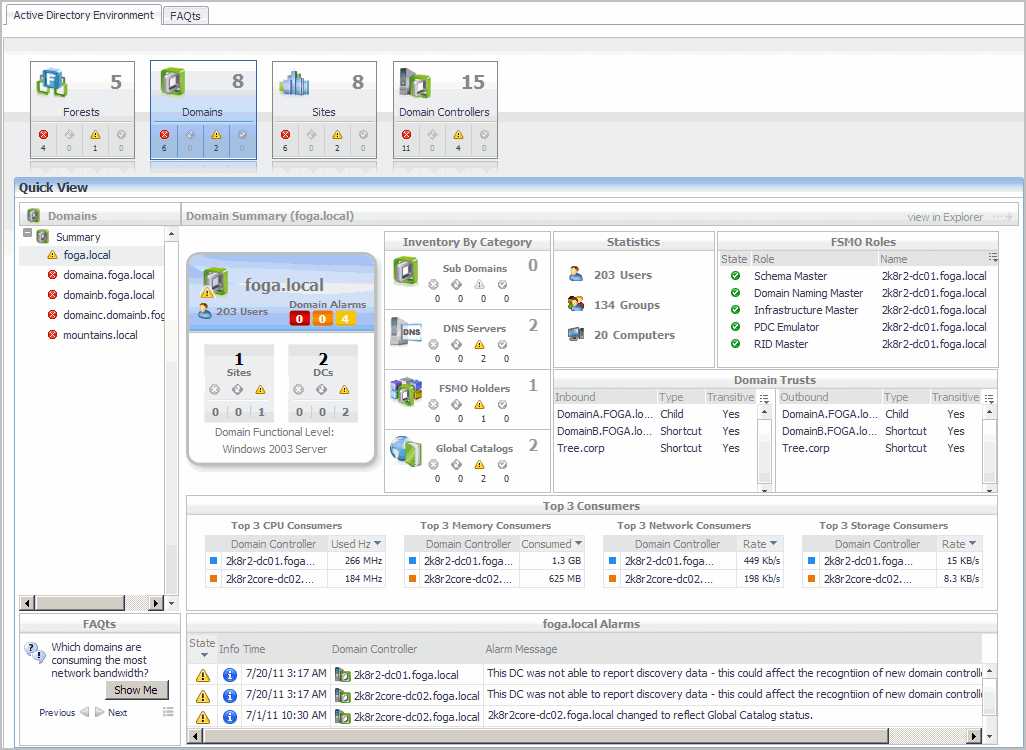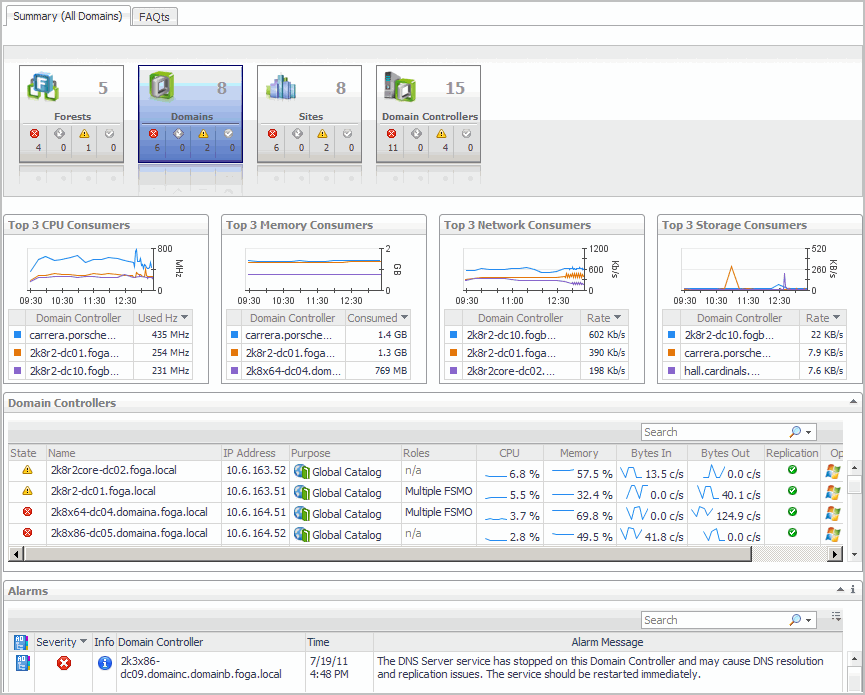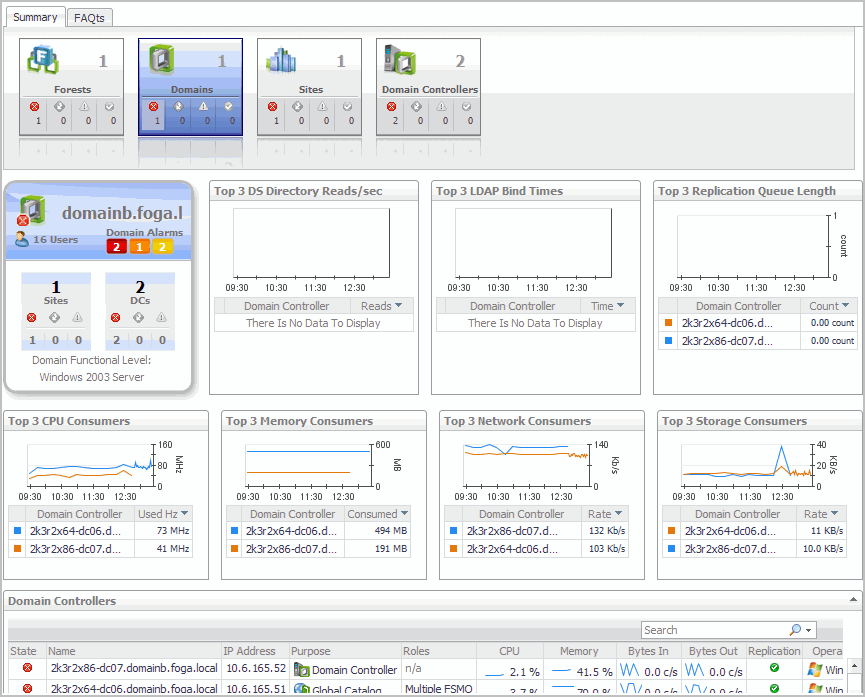Domain Environment Summary view
|
1 |
From the Foglight navigation panel, select Dashboards > Active Directory > Active Directory Environment. |
|
2 |
From the Monitoring tab, select the Domains tile. |
|
3 |
From the Object Tree view, select an individual Domain object. |
In addition to the domain tile, the following embedded views are displayed in the Domain Summary:
Domains Explorer Summary (All Domains) view
|
1 |
From the Foglight navigation panel, select Dashboards > Active Directory > Active Directory Explorer. |
|
2 |
From the Active Directory Enterprise view (under Dashboards in the navigation panel), select the Domain object container. |
In addition to the current domain alarms, this view is made up of the following embedded views:
Domain Explorer Summary view
|
1 |
From the Foglight navigation panel, select Dashboards > Active Directory > Active Directory Explorer. |
|
• |
From the Domains tile (at the top of the Summary view), select the Domains icon, title or count. On the Domains Inventory dialog, select an individual Domain object. |



